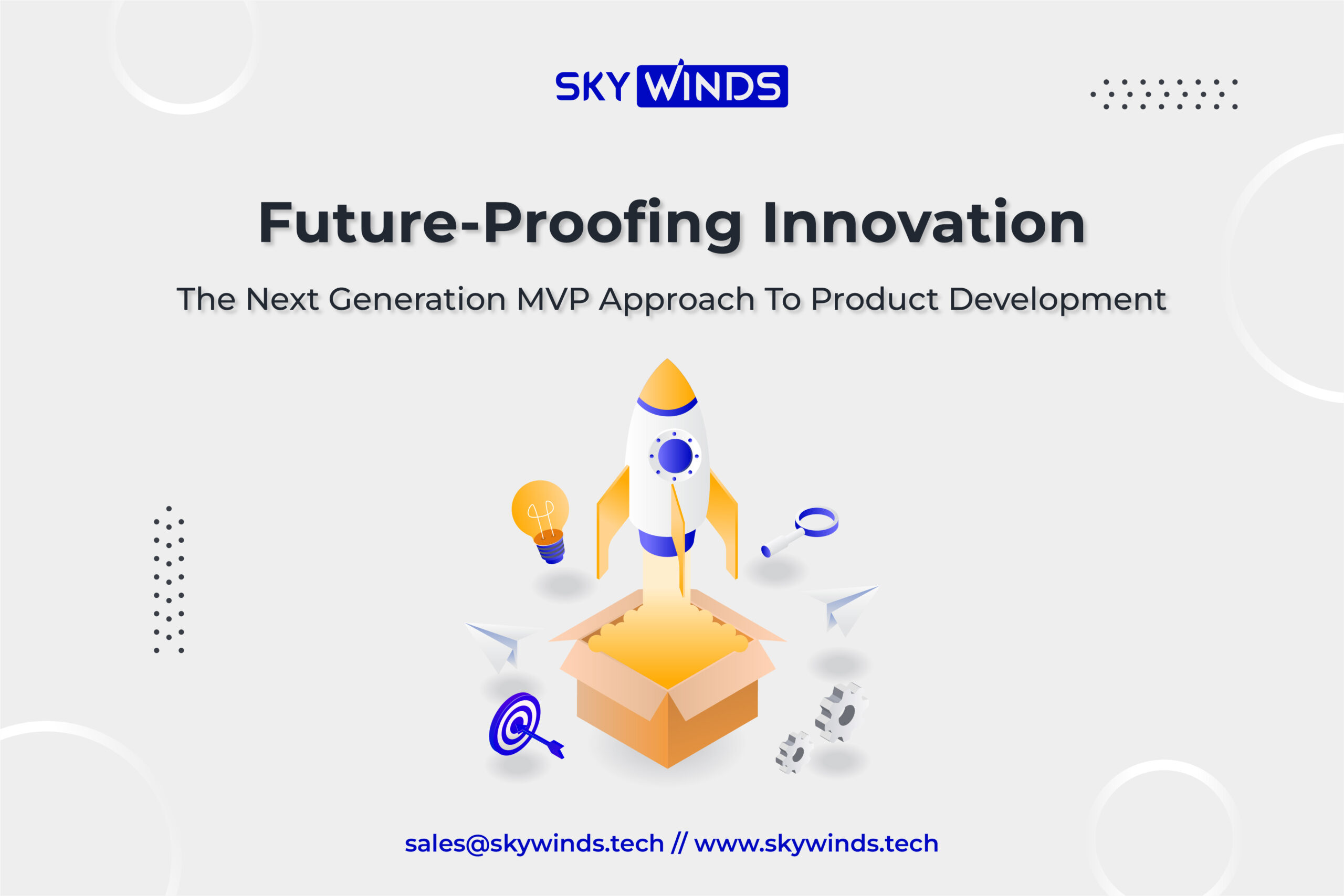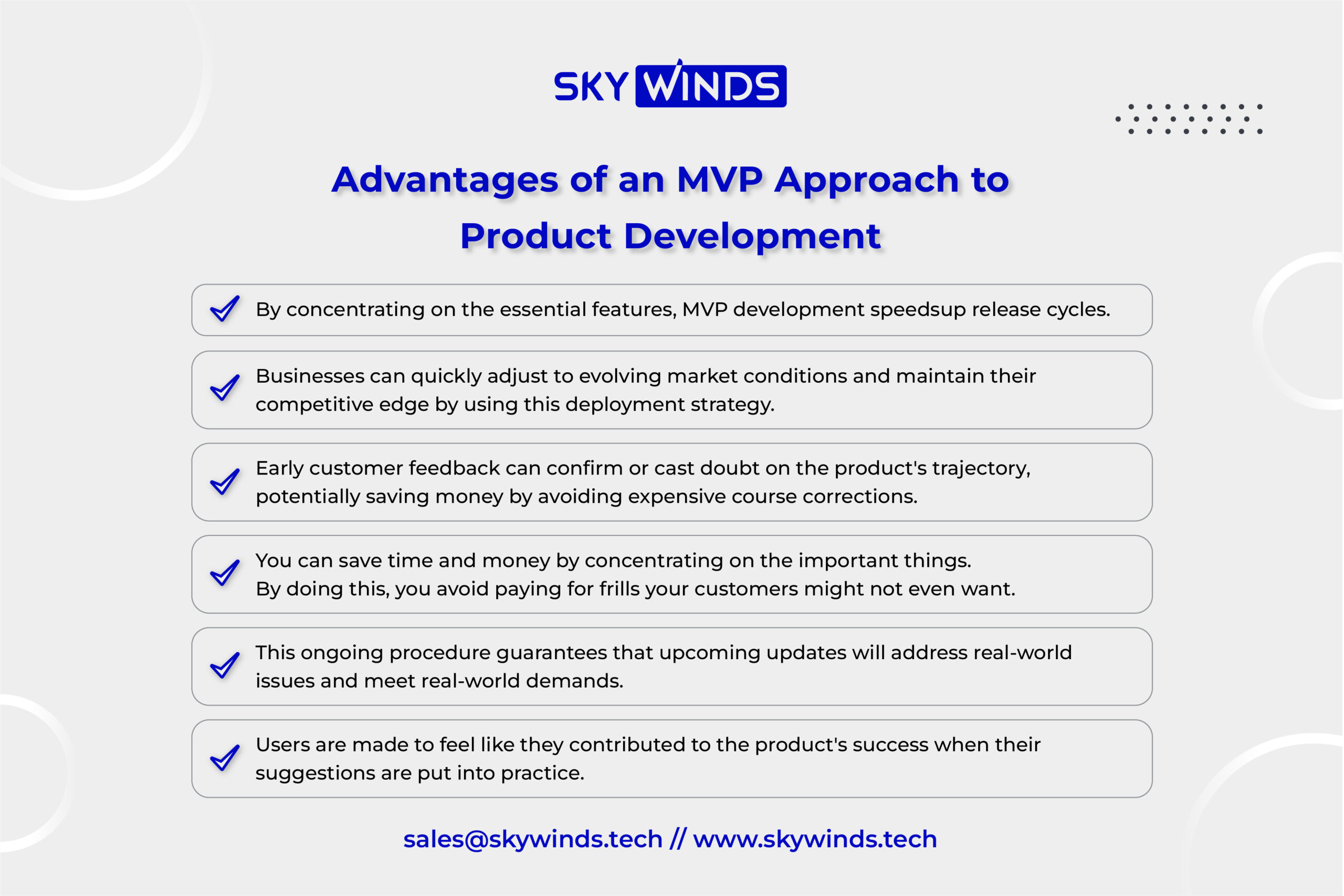
In this addition one sentence resounds loud and clear in the swirl of contemporary business dynamics: “Adapt or perish.” Companies must innovate, but they must also do so intelligently, given the constantly shifting environment. The MVP (Minimum Viable Product) approach to product development emerges as a guiding light in this situation, illuminating the way to a future-proof MVP Approach to product development that connects with users.
The MVP approach to product development has become a potent tool for developing goods that not only satisfy the needs of the current market but also have the adaptability to change and satisfy those of the future. And Industry-wide adoption of this agile methodology has given startups and established businesses alike a road map for navigating the complex world of product development.
Understanding MVP Approach to Product Development
Imagine developing a product that acts as a delivery mechanism for your innovation, and then a platform for your creativity, and a gateway to your users’ hearts. Next the MVP approach to product development aims to create a condensed version of a product with all the essential features required to meet the basic needs of the target market.
This condensed version allows developers to quickly test their theories and gather user feedback. Developers can produce a working product more quickly by focusing on the essentials, reducing the time it takes to market, and gaining early adopters’ enthusiasm.
But What is an MVP in software development? The MVP philosophy is becoming increasingly popular among software developers to streamline the frequently chaotic innovation process. Based on MVP agile methods, this approach can help businesses successfully handle their product development challenges.
- According to statistics, up to 90% of new businesses fail within the first five years. 70% of businesses fail between the second and fifth years of operation, with 10% failing in the first year.
Developing a minimum viable product (MVP), which enables startups to avoid these pitfalls and advance their projects, can save them in light of these alarming statistics.
This condensed version isn’t just a temporary fix; it’s a calculated strategy that enables authors to publish their works as soon as possible, take note of helpful criticism, and make the necessary corrections.
The MVP Agile Philosophy
Agility is at the heart of the MVP approach to product development. And traditional MVP approach to product development often involves elaborate blueprints, meticulous planning, and drawn-out developmental cycles. Conversely, the MVP agile philosophy champions flexibility and rapid iteration. It’s akin to a symphony of responsiveness to changing market dynamics and user preferences.
The process of MVP approach to product development are embraces an adaptable mindset, where developers can pivot their strategies based on real-time feedback and emerging trends. And this dynamic methodology ensures that the final product matches user needs and anticipates them.
The MVP Lifecycle: A Technical Exploration

Delving into the MVP development process reveals a structured sequence of meticulously orchestrated steps what’s more:
- Idea Conception and Validation: The journey begins with an innovative idea germination. Developers identify a pertinent problem or a void within the market and conceptualize a product poised to address this vacuum.
- Feature Prioritization and Rationalization: Subsequently, the development team embarks on the meticulous process of feature selection, ranking core functionalities based on their indispensability in highlighting the product’s value proposition.
- Rapid Prototyping and Concept Visualization: Armed with a curated set of features, the team constructs a rudimentary prototype or mockup, offering stakeholders a tangible visualization of the product’s intended functionalities.
- Development and Rigorous Testing: The actual development phase is initiated, channeling efforts exclusively toward implementing the identified essential features. This streamlined approach accelerates the development timeline. Post-development, a comprehensive testing regimen is undertaken to ascertain the product’s seamless functionality and optimal user experience.
- Strategic Deployment and User Feedback Aggregation: The MVP is launched within a controlled environment and introduced to a select cohort of early adopters or users. The insights garnered from their usage and feedback informs subsequent refinements.
- Iterative Enhancement and Scalability: Leveraging the feedback loop, the development team embarks on iterative enhancements, encompassing feature augmentation, usability refinements, and issue rectification. This iterative cycle persists until the product aligns with an extended spectrum of requirements, rendering it poised for extensive scalability.
Leveraging MVP Development Services to Introduce Novel Concepts
Numerous MVP development companies exist to aid businesses in implementing this forward-thinking methodology. They can easily guide you through creating an MVP, thanks to their extensive expertise in the field. Next businesses can improve the chances that their product will be a commercial success and meet consumer needs by collaborating with an MVP development service.
Advantages of an MVP Approach to Product Development

The benefits of the MVP agile strategy go far beyond the prototyping and testing stages for startups and well-established corporations.
- By concentrating on the essential features, MVP development speeds up release cycles.
- Businesses can quickly adjust to evolving market conditions and maintain their competitive edge by using this deployment strategy.
- Early customer feedback can confirm or cast doubt on the product’s trajectory, potentially saving money by avoiding expensive course corrections.
- You can save time and money by concentrating on the important things. By doing this, you avoid paying for frills your customers might not even want.
- This ongoing procedure guarantees that upcoming updates will address real-world issues and meet real-world demands.
- Users are made to feel like they contributed to the product’s success when their suggestions are put into practice.
Strategies for MVP Approach to Product Development for a Novel Enterprise
New businesses often exhibit a characteristic of high risk accompanied by the potential for substantial rewards. The MVP approach to product development methodology offers startups a competitive advantage by enabling the efficient and cost-effective assessment of business concepts.
Instead of allocating substantial financial resources toward developing a comprehensive product, startup enterprises can employ Minimum Viable Products (MVPs) to assess their assumptions, obtain customer feedback, and adjust their strategies. Adopting this approach significantly reduces the likelihood of failure while concurrently enhancing the potential for a successful product introduction.
Services Offered by an MVP App Development Company
Apps are now essential to the success of any business in the digital age. Companies that develop MVP apps specialize in producing user-centric, minimally viable products for mobile platforms. These businesses can create apps that meet the specific requirements of their target market without including obtrusive bells and whistles by employing the minimum viable product methodology. This efficient MVP approach to product development saves time and money and improves user satisfaction by giving them a more focused and successful experience.
Embracing MVP Approach to Product Development: A Future-Proof Strategy
The MVP approach to product development isn’t just a strategy; it’s equally important a philosophy fostering innovation and enduring relevance. Furthermore next focusing on the minimum viable product expedites the route to market and extracts invaluable user insights. Whether startups usher in revolutions or industry behemoths reinforcing positions, MVPs stand as the bedrock of pioneering the next product frontier.
As industries continue their metamorphosis, the inherent agility of the MVP methodology becomes a defining edge. The ability to pivot, adapt, and refine underscores sustained growth and unwavering relevance.
Conclusion
The MVP strategy is more than a tactical maneuver in today’s fast-paced technological and consumer landscape. furthermore it guides companies to not just short-term success but long-term dominance as well. It acts as a guide for developing items that will appeal to consumers in the here and now while also fitting in well with the future.
Finally when applied correctly, and the MVP approach to product development can propel a company to the forefront of its industry and firmly establish it as a forerunner in shaping the next generation of products.

